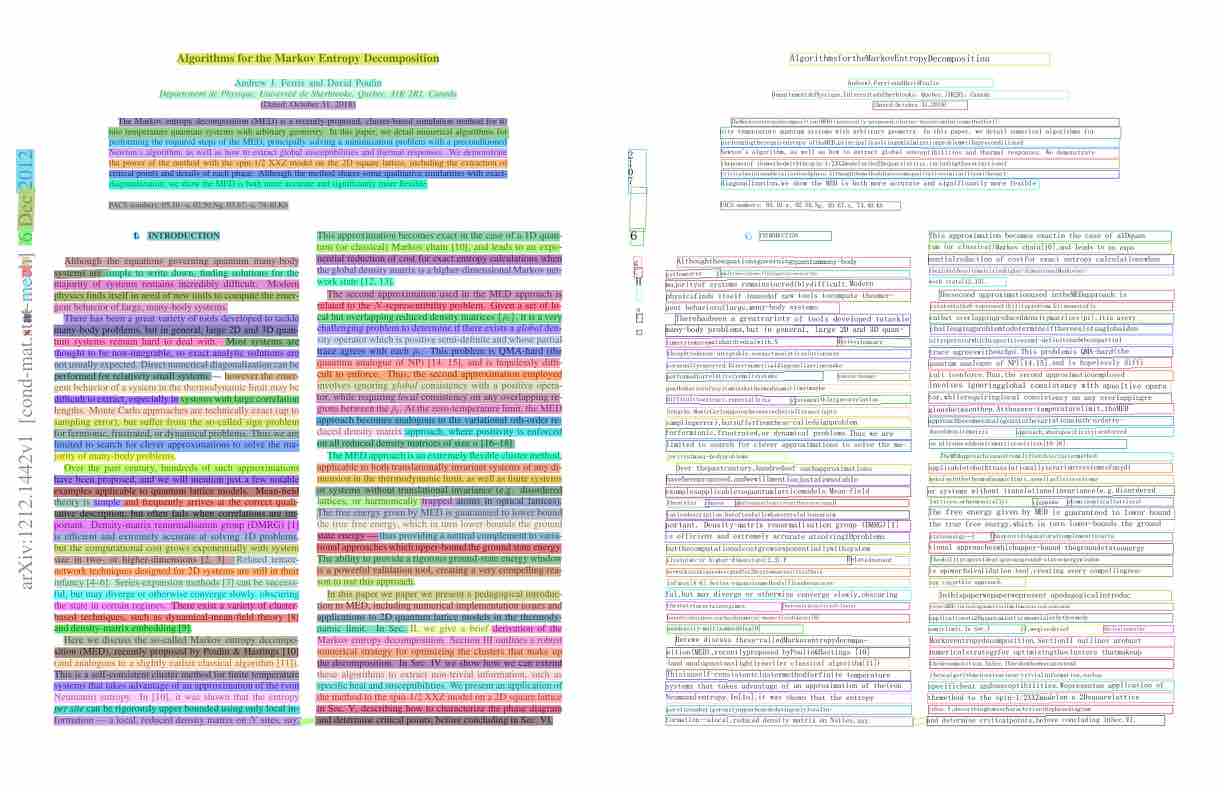Model Overview
Model Features
Model Capabilities
Use Cases
🚀 PP-OCRv4_mobile_det
PP-OCRv4_mobile_det is a text detection model from the PP-OCRv4_det series developed by the PaddleOCR team. Optimized for mobile use, it offers high efficiency and is suitable for deployment on edge devices.
🚀 Quick Start
📦 Installation
- PaddlePaddle Please refer to the following commands to install PaddlePaddle using pip:
# for CUDA11.8
python -m pip install paddlepaddle-gpu==3.0.0 -i https://www.paddlepaddle.org.cn/packages/stable/cu118/
# for CUDA12.6
python -m pip install paddlepaddle-gpu==3.0.0 -i https://www.paddlepaddle.org.cn/packages/stable/cu126/
# for CPU
python -m pip install paddlepaddle==3.0.0 -i https://www.paddlepaddle.org.cn/packages/stable/cpu/
For details about PaddlePaddle installation, please refer to the PaddlePaddle official website.
- PaddleOCR Install the latest version of the PaddleOCR inference package from PyPI:
python -m pip install paddleocr
💻 Usage Examples
🔍 Basic Usage
You can quickly experience the functionality with a single command:
paddleocr text_detection \
--model_name PP-OCRv4_mobile_det \
-i https://cdn-uploads.huggingface.co/production/uploads/681c1ecd9539bdde5ae1733c/3ul2Rq4Sk5Cn-l69D695U.png
You can also integrate the model inference of the text detection module into your project. Before running the following code, please download the sample image to your local machine.
from paddleocr import TextDetection
model = TextDetection(model_name="PP-OCRv4_mobile_det")
output = model.predict(input="3ul2Rq4Sk5Cn-l69D695U.png", batch_size=1)
for res in output:
res.print()
res.save_to_img(save_path="./output/")
res.save_to_json(save_path="./output/res.json")
After running, the obtained result is as follows:
{'res': {'input_path': '/root/.paddlex/predict_input/3ul2Rq4Sk5Cn-l69D695U.png', 'page_index': None, 'dt_polys': array([[[ 637, 1432],
...,
[ 637, 1454]],
...,
[[ 356, 107],
...,
[ 356, 130]]], dtype=int16), 'dt_scores': [0.8305358711080322, 0.6912752452425651, ..., 0.848925772091929]}}
The visualized image is as follows:

🔍 Advanced Usage
The ability of a single model is limited. But the pipeline consists of several models can provide more capacity to resolve difficult problems in real-world scenarios.
PP-OCRv4
The general OCR pipeline is used to solve text recognition tasks by extracting text information from images and outputting it in text form. And there are 5 modules in the pipeline:
- Document Image Orientation Classification Module (Optional)
- Text Image Unwarping Module (Optional)
- Text Line Orientation Classification Module (Optional)
- Text Detection Module
- Text Recognition Module
Run a single command to quickly experience the OCR pipeline:
paddleocr ocr -i https://cdn-uploads.huggingface.co/production/uploads/681c1ecd9539bdde5ae1733c/3ul2Rq4Sk5Cn-l69D695U.png \
--text_detection_model_name PP-OCRv4_mobile_det \
--text_recognition_model_name PP-OCRv4_mobile_rec \
--use_doc_orientation_classify False \
--use_doc_unwarping False \
--use_textline_orientation False \
--save_path ./output \
--device gpu:0
Results are printed to the terminal:
{'res': {'input_path': '/root/.paddlex/predict_input/3ul2Rq4Sk5Cn-l69D695U.png', 'page_index': None, 'model_settings': {'use_doc_preprocessor': True, 'use_textline_orientation': False}, 'doc_preprocessor_res': {'input_path': None, 'page_index': None, 'model_settings': {'use_doc_orientation_classify': False, 'use_doc_unwarping': False}, 'angle': -1}, 'dt_polys': array([[[ 356, 105],
...,
[ 356, 129]],
...,
[[ 630, 1432],
...,
[ 630, 1451]]], dtype=int16), 'text_det_params': {'limit_side_len': 64, 'limit_type': 'min', 'thresh': 0.3, 'max_side_limit': 4000, 'box_thresh': 0.6, 'unclip_ratio': 1.5}, 'text_type': 'general', 'textline_orientation_angles': array([-1, ..., -1]), 'text_rec_score_thresh': 0.0, 'rec_texts': ['AlgorithmsfortheMarkovEntropyDecomposition', 'AndrewJ.FerrisandDavidPoulin', 'DepartementdePhysique,UniversitedeSherbrooke,Quebec,J1K2R1,Canada', '(Dated:October 31,2018)', 'TheMarkoventropydecomposition(MED)isarecently-proposed,cluster-basedsimulationmethodforfi-', 'nite temperature quantum systems with arbitrary geometry. In this paper, we detail numerical algorithms for', 'performingtherequiredsteps oftheMED,principallysolvingaminimizationproblemwithapreconditioned', '2107', "Newton's algorithm, as well as how to extract global susceptibilities and thermal responses. We demonstrate", 'thepowerof themethodwiththespin-1/2XXZmodelonthe2Dsquarelattice,includingtheextractionof', 'criticalpointsanddetailsofeachphase.Althoughthemethodsharessomequalitativesimilaritieswithexact-', 'diagonalization,we show the MED is both more accurate and significantly more fexible', '', 'PACS numbers: 05.10.a, 02.50.Ng, 03.67.a, 74.40.Kb', '6', '1', 'INTRODUCTION', 'This approximation becomes exactin the case of a1Dquan', 'tum (or classical)Markov chain[10],and leads to an expo', 'g', 'Althoughtheequationsgoverningquantummany-body', 'nentialreduction of costfor exact entropy calculationswhen', 'C', 'systemsares', 'simpletowritedown,findingsolutionsforthe', 'theglobaldensitymatrixisahigher-dimensionalMarkovnet-', 'H', 'majorityof systems remainsincrediblydifficult.Modern', 'work state[12,13].', 'physicsfinds itself inneedof new tools tocompute theemer-', 'Thesecond approximationused intheMEDapproach is', 'gent behavioroflarge,many-body systems.', 'relatedtotheN-representibilityproblem.Givenasetoflo', '', 'T', 'Therehasbeen a greatvariety of tools developed totackle', 'calbut overlappingreduceddensitymatrices{pi},itis avery', 'many-body problems,but in general, large 2D and 3D quan-', 'challengingproblemtodetermineifthereexistsaglobalden', '1', 'tumsystemsremainhardtodealwith.N', 'Mostsystemsare', 'sityoperatorwhichispositivesemi-definiteandwhosepartial', 'thoughttobenon-integrable,soexactanalyticsolutionsare', 'trace agreeswitheachpi.This problemis QMA-hard(the', 'notusuallyexpected.Directnumericaldiagonalizationcanbe', 'quantum analogue of NP)[14,15],and is hopelessly diffi', 'performedforrelativelysmallsystems', 'howevertheemer', 'cult toenforce.Thus,the second approximationemployed', 'gentbehaviorofasysteminthethermodynamiclimitmaybe', 'involves ignoringglobal consistency with apositive opera', 'difficulttoextract,especiallyins', 'systemswithlargecorrelation', 'tor,whilerequiringlocal consistency on any overlappingre', 'lengths.MonteCarloapproachesaretechnicallyexact(upto', 'gionsbetweenthep.Atthezero-temperaturelimit,theMED', 'samplingerror),butsufferfromtheso-calledsignproblem', 'approachbecomesanalogoustothevariationalnth-orderre-', 'forfermionic,frustrated,or dynamical problems.Thus we are', 'duceddensitymatrix', 'approach,wherepositivityisenforced', 'limited to search for clever approximations to solve the ma-', 'on allreduceddensitymatricesofsizen[16-18].', 'jorityofmany-bodyproblems', 'TheMEDapproachisanextremelyflexibleclustermethod', 'Over thepastcentury,hundredsof suchapproximations', 'applicabletobothtranslationallyinvariantsystemsofanydi', 'havebeenproposed,andwewillmentionjustafewnotable', 'mensioninthethermodynamiclimit,aswellasfinitesystems', 'examplesapplicabletoquantumlatticemodels.Mean-field', 'or systems without translationalinvariance(e.g.disordered', 'theoryiss', 'simplea', 'andfrequentlyarrivesatthecorrectquali', 'lattices,orharmonicallyt', 'trappeda', 'atomsinopticallattices)', 'tativedescription,butoftenfailswhencorrelationsareim', 'The free energy given by MED is guaranteed to lower bound', 'portant. Density-matrix renormalisation group (DMRG)[1]', 'the true free energy,which in turn lower-bounds the ground', 'is efficient and extremely accurate atsolving1Dproblems', 'stateenergy—t', 'thusprovidinganaturalcomplementtovaria', 'butthecomputationalcostgrowsexponentiallywithsystem', 'tional approacheswhichupper-bound thegroundstateenergy', 'sizeintwo-or higher-dimensions[2,3].F', 'Relatedtensor', 'Theabilitytoprovidearigorousground-stateenergywindow', 'networktechniquesdesignedfor2Dsystemsarestillinthein', 'is apowerfulvalidation tool,creating avery compellingrea-', 'infancy[4-6].Series-expansionmethods[7]canbesuccess-', 'son tousethis approach', 'ful,but may diverge or otherwise converge slowly,obscuring', 'Inthispaperwepaperwepresent apedagogicalintroduc', 'thestateincertainregimes.', 'Thereexistavarietyofcluster', 'tiontoMED,includingnumericalimplementationissuesand', 'basedtechniques,suchasdynamical-mean-fieldtheory[8]', 'applicationsto2Dquantumlatticemodelsinthethermody', 'anddensity-matrixembedding[9]', 'namiclimit.In Sec.I', 'II,wegiveabrief', 'derivationofthe', 'Herewe discuss theso-calledMarkoventropydecompo-', 'Markoventropydecomposition.SectionII outlines arobust', 'sition(MED),recentlyproposed byPoulin&Hastings [10]', 'numericalstrategyfor optimizingtheclusters thatmakeup', '(and analogoustoaslightlyearlier classical algorithm[11])', 'thedecomposition.InSec.IVweshowhowwecanextend', 'Thisisaself-consistentclustermethodforfinite temperature', 'thesealgorithmstoextractnon-trivialinformation,suchas', 'systems that takes advantage of an approximation of the(von', 'specificheat andsusceptibilities.Wepresentan application of', 'Neumann)entropy.In[1o],it was shown that the entropy', 'themethod to the spin-1/2XXZmodelon a 2Dsquarelattice', 'persitecanberigorouslyupperboundedusingonlylocalin-', 'inSec.V,describinghowtocharacterizethephasediagram', 'formation—alocal,reduced density matrix on Nsites,say.', '', 'and determine criticalpoints,before concluding inSec.VI.'], 'rec_scores': array([0.9952876 , ..., 0.95561302]), 'rec_polys': array([[[ 356, 105],
...,
[ 356, 129]],
...,
[[ 630, 1432],
...,
[ 630, 1451]]], dtype=int16), 'rec_boxes': array([[ 356, ..., 130],
...,
[ 630, ..., 1451]], dtype=int16)}}
If save_path is specified, the visualization results will be saved under save_path. The visualization output is shown below:

The command-line method is for quick experience. For project integration, also only a few codes are needed as well:
from paddleocr import PaddleOCR
ocr = PaddleOCR(
text_detection_model_name="PP-OCRv4_mobile_det",
text_recognition_model_name="PP-OCRv4_mobile_rec",
use_doc_orientation_classify=False, # Disables document orientation classification model via this parameter
use_doc_unwarping=False, # Disables text image rectification model via this parameter
use_textline_orientation=False, # Disables text line orientation classification model via this parameter
)
result = ocr.predict("./3ul2Rq4Sk5Cn-l69D695U.png")
for res in result:
res.print()
res.save_to_img("output")
res.save_to_json("output")
For details about usage command and descriptions of parameters, please refer to the Document.
📚 Documentation
Key Accuracy Metrics
| Handwritten Chinese | Handwritten English | Printed Chinese | Printed English | Traditional Chinese | Ancient Text | Japanese | General Scenario | Pinyin | Rotation | Distortion | Artistic Text | Average |
|---|---|---|---|---|---|---|---|---|---|---|---|---|
| 0.583 | 0.369 | 0.872 | 0.773 | 0.663 | 0.231 | 0.634 | 0.710 | 0.430 | 0.299 | 0.715 | 0.549 | 0.624 |
🔗 Links
📄 License
This project is licensed under the Apache-2.0 license.
 Transformers
Transformers Transformers
Transformers Transformers
Transformers Transformers
Transformers Transformers
Transformers Transformers
Transformers Transformers Japanese
Transformers Japanese Transformers
Transformers Transformers
Transformers